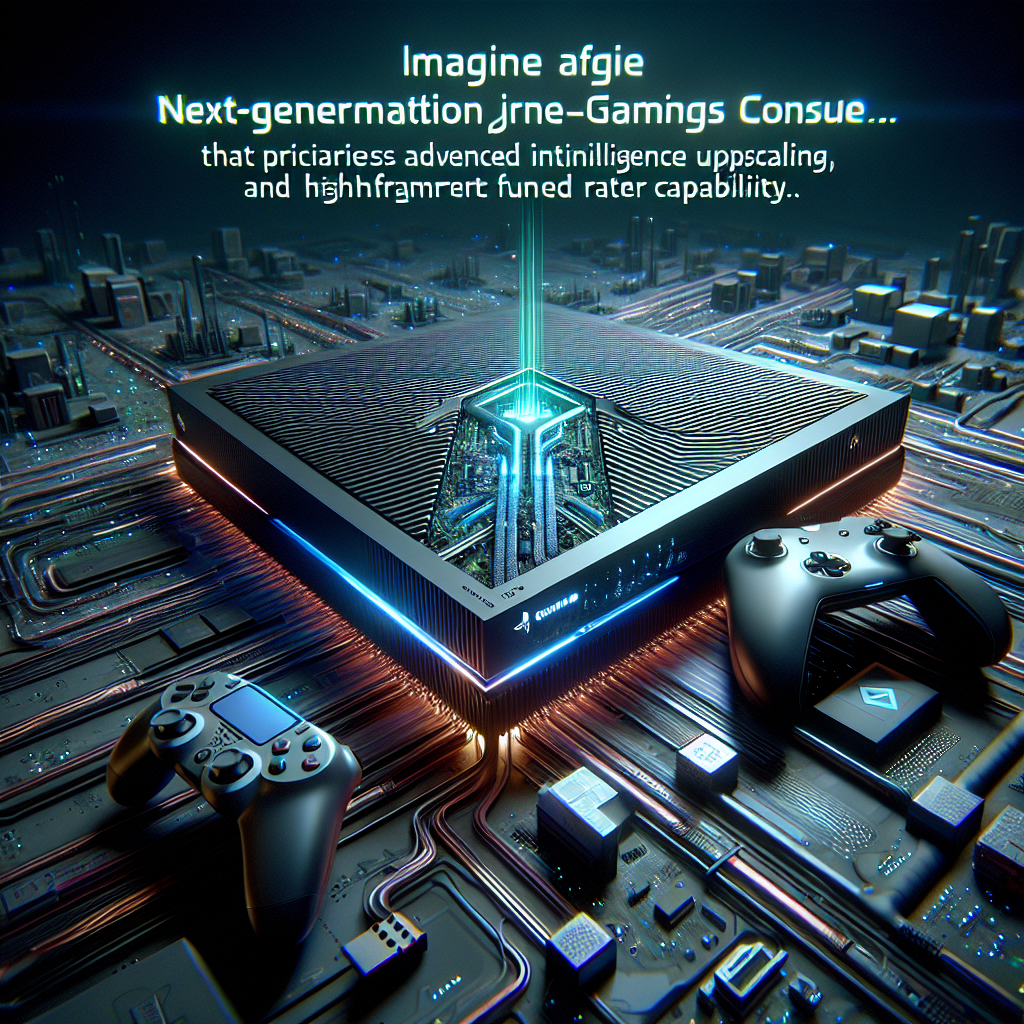Sony's Strategic Play: Unveiling the Alleged PlayStation 5 Pro Specs
In the whirlwind world of gaming console rumors, the buzz is electric, the speculation rife, and the PlayStation 5 Pro is its latest star. A leak as shadowy as it is intriguing has charged the gaming community with a potent dose of anticipation. But beyond the confines of obscurity, where do these whispers of technological advancement stand? Let’s peel back the layers of purported specs and inspect Sony's strategic positioning in the console battleground.
The Genesis of the Rumor Mill
At the heart of this enigma lies a set of specs that could redefine the console experience. The rumor posits that the PlayStation 5 Pro will brandish 4 nanometer TSMC silicon, harnessing the vigour of a Zen2 CPU clocked at a zippy 4.4 GHz—up 26% from its predecessor. This silicon beast purportedly boasts up to 60 compute units, dialed down to 56 in classic Sony fashion, and marries the architectural prowess of both RDNA A3 and RDNA A4.
But the real sizzle comes from Sony's custom neural processing unit, a tailored powerhouse potentially giving rise to a bespoke AI hardware-accelerated upscaling method—a DLSS rival exclusive to Sony's armory.
Specs Stripped Down: More Than Meets the Eye
As the rumor seeped through the bedrock of the gaming community, it became apparent that Sony isn't just playing the power game; they're strategizing. Opting for the tried-and-tested Zen2 denotes a shrewd nod to backward compatibility, sidestepping the intensive labor of retrofitting with newer, potentially temperamental CPU architectures.
The secondary layer to this strategic play is the alleged speed bump in RAM. The same 16 GB of GDDR6, now clocked 29% faster, signals that Sony may be chasing the frame rate dragon as opposed to the resolution leviathan. In a marketplace where the lust for 8K is tepid at best, this prioritization could be Sony's covert weapon.
A Closer Look at the AI Angle
Amid the hardware hubbub, it's the custom neural processing unit that has tongues wagging and minds racing. This AI accelerator might not just be a nod to future-proofing—it's a clear war cry in the battle for superior upscaling techniques. With this, Sony could be plotting to vault over mere fidelity, positioning itself as the purveyor of performance.
The Price Point Puzzle
https://www.youtube.com/watch?v=aowqsIKcYPc
Delving deeper into the fiscal fabric of the PlayStation 5 Pro, one has to wonder: What's the cost of innovation? Manufacture-wise, the leap from PlayStation 5 to its Pro sibling might be less grandiose than anticipated. Without the need for additional cooling, a more complex board, or a RAM upgrade, Sony could be eyeing a pricing sweet spot that undercuts expectations while delivering a palpable performance upgrade.
The Frame Rate Frontier
Gaming at the Speed of Thought
One could speculate that if these rumors hold water, Sony's masterstroke isn't in rendering pixels but in smoothing performance. The purported higher clock speed of the CPU and GPU would not just enhance but elevate gaming experiences, propelling titles to the hallowed realm of 60 frames per second and beyond with seemingly effortless fluidity.
Developers' Delight
For developers, this could be a dream. The potential of a more robust console that doesn't demand a rethinking of game design but rather promises to turbocharge existing titles is alluring. The promise of better frame rates without the need for labor-intensive optimization might just be the siren song that lures developers to the PlayStation 5 Pro's shores.
The Resolution Revolution on Hold
Sony's strategic placement of its pieces on the gaming board suggests a resolution revolution is not the order of the day. Instead, the spotlight is squarely on silky smooth gameplay—a decision that could resonate with the majority of gamers who are content with the current crop of resolutions and ravenous for performance perfection.
The Broader Battle
A Mid-Generation Marvel
The PlayStation 5 Pro, if it adheres to the leaked script, appears to be shaping up as a mid-generation marvel. Its presence would be a statement—an assertion that Sony is not just responding to the competition but setting the pace, defining the parameters of what a mid-gen refresh should encapsulate.
A "Pro" Move Against Anticipation
While naysayers may dismiss the rumor mill's churn as mere fabrication, there exists the tantalizing possibility that Sony is playing a long game of anticipation. The strategic leak itself may serve to buoy interest, stir the market, and set the scene for a reveal that could cement Sony's standing in the console wars.
In summary, the notion of a PlayStation 5 Pro ripening on the horizon, replete with a custom neural processing unit and a focus on high frame rates, paints a picture of Sony's strategic savoir-faire. While the veracity of these speculations is yet to be validated, one thing is irrefutable—should Sony manifest this vision, it would be a move of calculated brilliance, a gambit that could redefine the gaming landscape.
So, as we stand at the precipice of potential, we wait, controllers in hand, for the moment when rumor metamorphoses into reality, and the gaming world is, once again, unalterably transformed.
Related News
- Xbox and Intel: A Dance of Giants in the Console Wars
- Zen and the Art of Microprocessor Dominance: AMD's Next Era in Gaming CPUs
- Navigating the Supercharged Terrain of NVIDIA's Latest RTX 4000 Series
- AMD Zen 5 and X870 Chipset: Navigating Through the Leaks and Speculations
- AMD's RX 7600 XT: A Potential Market Disruptor
